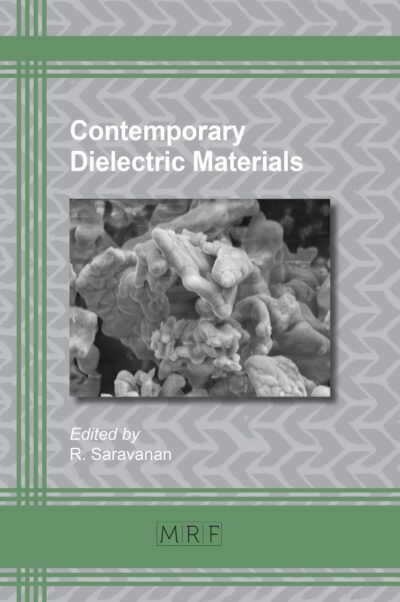Evaluation of In-Process Laser Heat Treatment on the Stress Conditions in Laser Metal Deposited Stellite® 21
G.L. Payne, I. Violatos, S. Fitzpatrick, D. Easton, J. Walker
download PDFAbstract. Laser Metal Deposition with Powder (LMD-p) has been investigated as a means of Remanufacturing high value components, such as tooling, dies and moulds. However, the
LMD-p process is known to develop high levels of residual stresses within the builds, which may have an effect on the mechanical performance of the components. Heat treatment is a common method for stress relieving, however, large components or those undergoing ReManufacturing may not be suitable for conventional stress relieving heat treatments processes, such as those using a furnace. Therefore, localised and dynamic heat treatment using the laser installed on the
LMD-p apparatus has been investigated as means of providing stress relieving heat treatment. As such, research to understand the generation and distribution of stresses has been undertaken in conjunction with micro-structural analysis to provide a robust evaluation. A combination of Contour Method, XRD, Micro-Hardness and SEM imaging was used for analysis. Preliminary assessments have largely shown positive results as the specimen with in-process heat treatment has exhibited low and relatively uniform stress fields.
Keywords
Additive Manufacturing, Laser Metal Deposition, Residual Stress, XRD, Contour Method, Micro-Hardness, Energy Density, Micro-Structural Analysis
Published online 9/11/2018, 6 pages
Copyright © 2018 by the author(s)
Published under license by Materials Research Forum LLC., Millersville PA, USA
Citation: G.L. Payne, I. Violatos, S. Fitzpatrick, D. Easton, J. Walker, ‘Evaluation of In-Process Laser Heat Treatment on the Stress Conditions in Laser Metal Deposited Stellite® 21’, Materials Research Proceedings, Vol. 6, pp 265-270, 2018
DOI: https://dx.doi.org/10.21741/9781945291890-42
The article was published as article 42 of the book Residual Stresses 2018
![]() Content from this work may be used under the terms of the Creative Commons Attribution 3.0 licence. Any further distribution of this work must maintain attribution to the author(s) and the title of the work, journal citation and DOI.
Content from this work may be used under the terms of the Creative Commons Attribution 3.0 licence. Any further distribution of this work must maintain attribution to the author(s) and the title of the work, journal citation and DOI.
References
[1] Toumi, M., et al. Residual Stress Analysis of Stellite-coated Forging Tool Steel Using Synchrotron Radiation Diffraction. in Materials Science Forum. 2012. Trans Tech Publ.
[2] Birol, Y., Thermal fatigue testing of Inconel 617 and Stellite 6 alloys as potential tooling materials for thixoforming of steels. Materials Science and Engineering: A, 2010. 527(7-8): p. 1938-1945. https://doi.org/10.1016/j.msea.2009.11.021
[3] Mudge, R.P. and N.R. Wald, Laser engineered net shaping advances additive manufacturing and repair. Welding Journal-New York-, 2007. 86(1): p. 44.
[4] Payne, G., et al., Remanufacturing H13 Steel Moulds and Dies Using Laser Metal deposition. Advances in Manufacturing Technology XXX; IOS Press: Amsterdam, The Netherlands, 2016: p. 93.
[5] Cullen, C., et al., AFRC CATP 764 Suitability of LMD for Oil and Gas Cladding and Die Remanufacture. 2018, University of Strathclyde: Advanced Forming Research Centre.
[6] Cullen, C., et al., AFRC CATP 463 Additive Die ReManufacturing. 2017, University of Strathclyde: Advanced Forming Research Centre.
[7] Zavala-Arredondo, M., et al., Laser diode area melting for high speed additive manufacturing of metallic components. Materials & Design, 2017. 117: p. 305-315. https://doi.org/10.1016/j.matdes.2016.12.095
[8] Designation, A., Standard Hardness Conversion Tables for Metals Relationship Among Brinell Hardness. Vickers Hardness, Rockwell Hardness, Superficial Hardness, Knoop Hardness, Scleroscope Hardness, and Leeb Hardness, ASTM international E140-12b, 2013. 1.
[9] Prime, M.B., Cross-sectional mapping of residual stresses by measuring the surface contour after a cut. Journal of engineering materials and technology, 2001. 123(2): p. 162-168. https://doi.org/10.1115/1.1345526
[10] Fitzpatrick, M., et al., Determination of residual stresses by X-ray diffraction. 2005.














